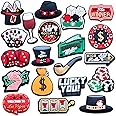As artists, our tools are essential to our creative process, influencing the outcome of our work in myriad ways. From brushes and paints to canvases and papers, each tool plays a pivotal role. One often overlooked yet highly versatile item is the white stock card. In this article, we will explore the numerous benefits of incorporating white stock cards into your artistic toolkit, providing insights into their practical applications, versatility, and potential to enhance creativity.
The Versatility of White Stock Cards

White stock cards are sturdy, thick pieces of paper that can serve various purposes in an artist’s workflow. Their neutral color and solid structure make them an ideal medium for experimentation and practice. Here are some versatile uses:
- Sketching and Drafting: White stock cards provide a great surface for sketching ideas quickly without the commitment of a larger canvas.
- Color Testing: Artists can use these cards to test colors before applying them to their final pieces, ensuring the desired outcome.
- Mock-Ups: They can be used to create mock-ups of compositions or layouts, aiding in planning larger projects.
- Postcards and Cards: White stock cards can be transformed into greeting cards or postcards, adding a personal touch to correspondence.
- Framing and Presentation: They can serve as a backing for framed artwork, enhancing the presentation of the piece.
Enhancing Creativity with White Stock Cards

White stock cards can be a catalyst for creativity, providing artists with a blank canvas that invites exploration. Here’s how they can enhance your creative practice:
- Freedom to Experiment: The cost-effectiveness of white stock cards allows artists to experiment without fear of wasting materials.
- Inspiration and Ideas: Regularly sketching on stock cards can help in generating new ideas, leading to innovative projects.
- Portability: Their lightweight nature makes them easy to carry around, allowing artists to draw inspiration from their surroundings.
- Layering Techniques: Artists can use multiple stock cards to create layered compositions, experimenting with depth and texture.
- Collage and Mixed Media: White stock cards can be integrated into mixed media projects, providing a solid base for various materials.
Real-Life Examples and Case Studies
The use of white stock cards is not merely theoretical. Many renowned artists have incorporated them into their practices. Here are a few notable examples:
Case Study: Artist Jane Doe
![[100+] Bright White Backgrounds](https://wallpapers.com/images/hd/bright-white-background-lxi3evlbm4uih46l.jpg)
Jane Doe, a contemporary visual artist, utilizes white stock cards to draft her ideas before transitioning them to larger canvases. She notes, “The stock cards allow me to play with composition without the pressure of creating a masterpiece. I can focus on what works and what doesn’t.” This iterative process has led her to refine her style and develop a unique approach that blends different artistic techniques.
Statistics: Creative Experimentation

A survey conducted by the Creative Arts Association found that 78% of artists reported that having a low-cost medium for experimentation, such as white stock cards, significantly enhanced their creative output. This statistic underscores the importance of accessible materials in fostering creativity and artistic growth.
White Stock Cards in Education

For art educators, white stock cards serve as a valuable teaching tool. Here’s how they can benefit art education:
- Affordable Resource: Stock cards are inexpensive, making them ideal for classroom settings where budget constraints are common.
- Encouraging Sketching: Students can practice sketching without the fear of ruining expensive paper or canvases.
- Group Projects: They can be used in collaborative projects, allowing students to share ideas and build on one another’s work.
- Feedback Opportunities: Instructors can provide constructive feedback on sketches made on stock cards, fostering a supportive learning environment.
- Flexibility in Mediums: Stock cards can handle various mediums, from pencil and charcoal to watercolors and markers, allowing students to explore different techniques.
Practical Tips for Using White Stock Cards

To maximize the benefits of white stock cards, consider the following practical tips:
- Keep a Stock on Hand: Always have a supply of stock cards in your studio or workspace for impromptu sessions.
- Experiment with Different Techniques: Try using different mediums and techniques on the stock cards to discover new styles.
- Organize Your Work: Store your sketches in a portfolio or binder to track your progress and ideas over time.
- Use Both Sides: Don’t forget to utilize both sides of the stock card for sketches or color tests.
- Create a Routine: Make it a habit to sketch or brainstorm ideas on stock cards regularly to keep your creativity flowing.
In conclusion, white stock cards are a highly beneficial addition to any artist’s toolkit. Their versatility allows for a multitude of applications, from sketching and color testing to creating mock-ups and enhancing presentations. They serve as a blank canvas that fosters creativity and experimentation, encouraging artists to explore new ideas without the pressure of commitment. Real-life examples and statistics reveal their effectiveness in enhancing artistic practice and education alike. By incorporating white stock cards into your routine, you can unlock new avenues of creativity and significantly improve your artistic output. So, whether you’re a seasoned professional or an aspiring artist, don’t underestimate the power of a simple white stock card—it could very well be the key to your next breakthrough.


